27 Stunning Photos That Perfectly Capture Everyday Life in the 1960s
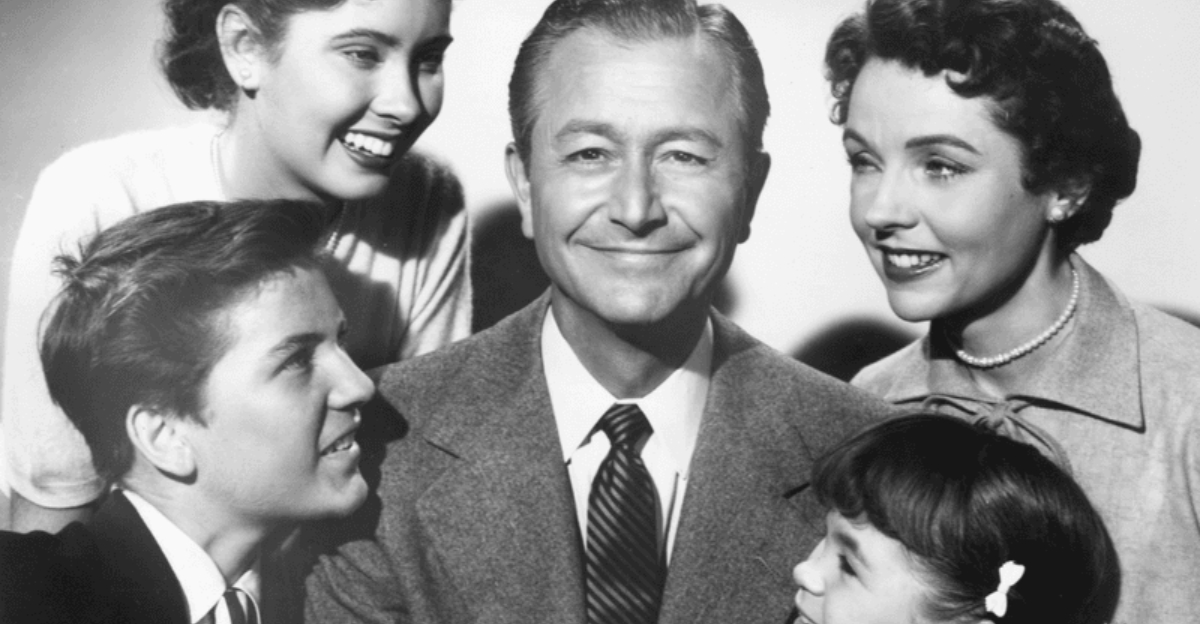
The 1960s weren’t just a decade—they were a movement, a cultural explosion of music, fashion, rebellion, and change. From the rise of rock ‘n’ roll to political revolutions, every moment felt electric, and lucky for us, cameras were there to capture it all.
These stunning photographs aren’t just images; they’re time machines, freezing the energy, struggles, and triumphs of a generation that refused to stand still. Whether it’s a snapshot of a Beatlemania-fueled frenzy, a peaceful protest in the streets, or kids playing without a care in the world, each picture paints a story of an era unlike any other.
Join us as we take a visual journey through 25 incredible photos that define the ‘60s—a decade of bold ideas, bright colors, and unforgettable moments. Because sometimes, history isn’t best told in words—it’s best seen through the lens.
1. The Surfing Craze
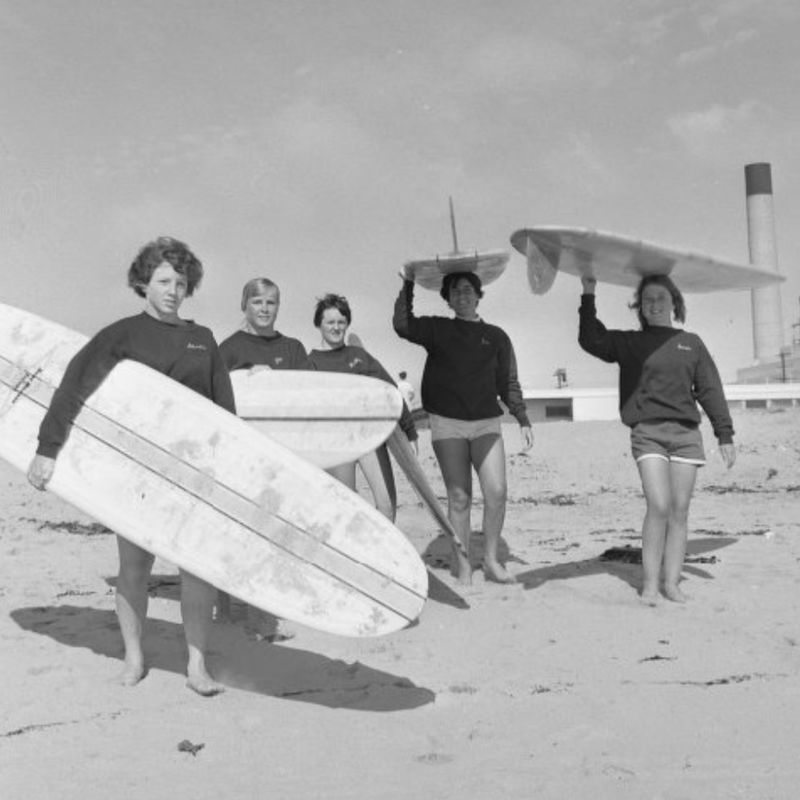
Hang ten and catch a wave with the surfing enthusiasts of the 1960s! As the sun-kissed beaches of California became a hotspot, surfing transformed from a niche activity into a cultural phenomenon. Youngsters donned their coolest swimsuits and hit the ocean, their surfboards as colorful as their personalities.
While the Beach Boys sang about good vibrations, these surfers were living the Californian dream, gliding over the waves with a mix of skill and sheer joy. The surf culture was as much about the lifestyle as the sport, embodying the free-spirited vibe that defined the decade.
Even if hanging ten wasn’t your forte, the energy and excitement surrounding surfing were infectious. Onlookers lined the shores, mesmerized by the water ballet before them. It was more than just a pastime; it was a way of life that perfectly encapsulated the spirit of the ’60s. Surfs up!
2. Woodstock’s Music Festival
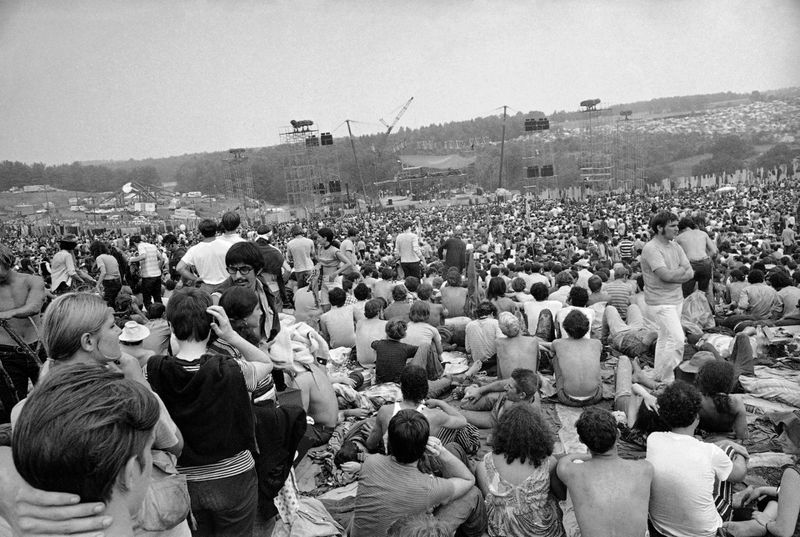
If you remember the ’60s, did you really experience Woodstock? That’s the groovy question! This iconic music festival was the epitome of peace, love, and music, drawing together over 400,000 free spirits in 1969. The festival, held on a dairy farm in Bethel, New York, was a melting pot of cultures, music genres, and flower power.
For three days, attendees grooved to performances by legendary artists like Jimi Hendrix and Janis Joplin. It was a time to let loose, connect with like-minded individuals, and celebrate the music that moved a generation. The muddy fields became a canvas for creativity, as the festival-goers created art, shared stories, and danced like nobody was watching.
While the music played on, Woodstock became an emblem of the counterculture movement, proving that harmony and unity were more than just a dream. Remember, peace and love never go out of style!
3. Swinging London Fashion
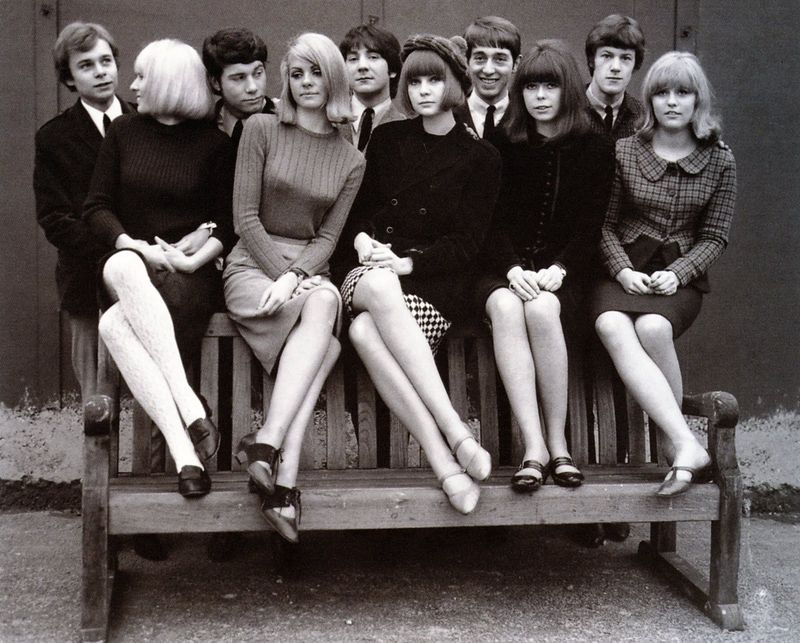
Fashion in the 1960s was about making statements and breaking norms, and nowhere was this more evident than in swinging London. With its pulse on the latest trends, Carnaby Street became the epicenter of fashion innovation, where the mini skirt made its scandalous debut!
Fashion-forward individuals embraced bold patterns, vibrant colors, and experimental styles that pushed boundaries. It wasn’t just about looking good; it was about expressing individuality and challenging societal conventions. The fashion scene was a whirlwind of creativity, where tradition took a backseat.
Boutiques sprang up, offering the freshest styles to a generation eager to redefine beauty. Whether you were wearing bell-bottoms or bold geometric prints, the key was to strut with confidence. So, next time you want to channel your inner fashion rebel, remember the swinging ’60s, where every street was a catwalk!
4. Moon Landing Celebration

One small step for man, one giant leap for mankind! In 1969, the world watched in awe as Neil Armstrong took humanity’s first steps on the moon. Families crowded around their black-and-white televisions, eyes glued to the screen, witnessing history in the making.
The moon landing was more than just a scientific achievement; it was a symbol of hope and endless possibilities. Children dreamed of becoming astronauts, while adults marveled at the wonders of technology that made such a feat possible. It was a moment that united the world in wonder and amazement.
As Armstrong’s words echoed across the cosmos, the ’60s closed on a note of triumph and exploration. It was a decade that dared to dream beyond the stars and proved that with determination, the sky’s not the limit—it’s just the beginning.
5. Civil Rights March

Marching towards equality, the 1960s saw the rise of the Civil Rights Movement, a pivotal era in American history. The iconic March on Washington in 1963 was a landmark event, drawing over 250,000 people advocating for justice and equality.
With Martin Luther King Jr.’s powerful ‘I Have a Dream’ speech resonating through the air, the march symbolized hope and determination. Participants of all ages and backgrounds walked side by side, their unity a testament to the strength of the human spirit and the pursuit of a more just society.
This peaceful demonstration captured the struggle and triumph of those who fought tirelessly for civil rights. Though the road was long and fraught with challenges, the march left an indelible mark on history, inspiring generations to continue the fight for equality. Together, change is unstoppable!
6. Vietnam War Protests
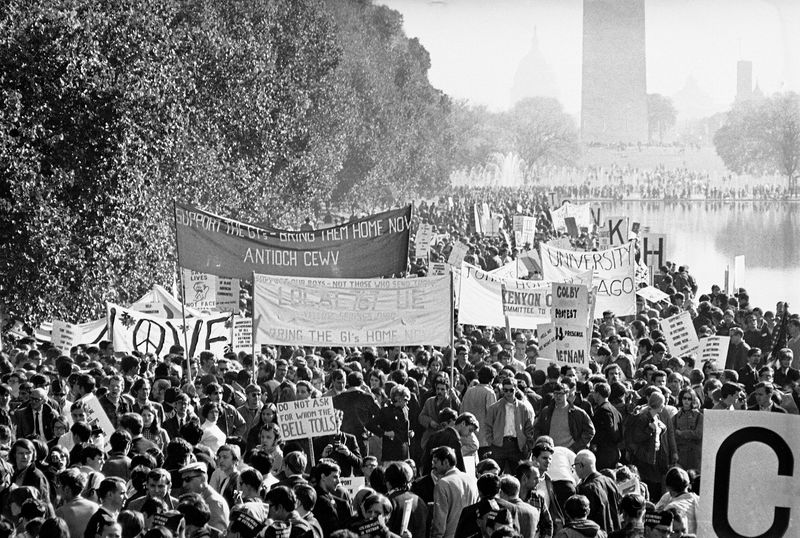
Hell no, we won’t go! The chant echoed across campuses as students rallied against the Vietnam War. The 1960s were a time of political activism, and the anti-war movement played a crucial role in shaping public opinion.
College students, armed with their beliefs and handmade signs, took to the streets, driven by a desire for peace. The protests were a platform for voices that demanded change, highlighting the power of youth and collective action.
While tensions ran high, the movement was grounded in a commitment to non-violence and a vision for a better world. The passionate pleas for peace resonated across the nation, making it clear that the youth were not just the leaders of tomorrow, but the changemakers of today. Power to the peaceful!
7. The Twist Dance

Don’t just stand there, let’s get to it—Twist around, there’s nothing to it! The Twist took the dance floors by storm in the early ’60s, igniting a dance revolution that got everyone moving and grooving.
With its infectious beat and simple moves, the Twist was a dance craze that everyone could join. Unlike traditional dances, there were no rules, no partners required—just you, the music, and a whole lot of fun.
Chubby Checker’s hit single, ‘The Twist,’ became the anthem of the era, encouraging folks to let loose and shake it like never before. Whether you were at a school dance or in your living room, the Twist was a ticket to joy and self-expression. So twist and shout, and let the good times roll!
8. Summer of Love
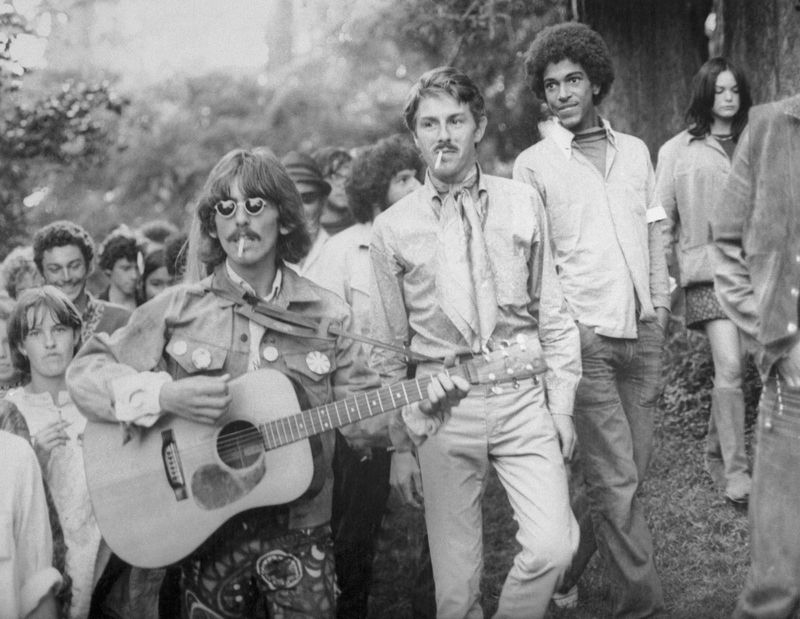
Flower power was in full bloom during the Summer of Love in 1967, a magical time when San Francisco became a mecca for hippies and dreamers. With their groovy threads and flower crowns, they gathered in Haight-Ashbury, spreading messages of peace and love.
The Summer of Love was a celebration of freedom and creativity, a break from convention that embraced the spiritual and the psychedelic. Music, art, and poetry filled the air as people connected in ways that transcended the ordinary.
This cultural phenomenon was more than just a summer—it was a statement. A statement that peace, unity, and love could create a better world. As the flowers bloomed, so did hope for a future where love conquered all. Pass the love beads, please!
9. Beatlemania

I want to hold your hand and take you back to the height of Beatlemania! The Fab Four from Liverpool took the world by storm in the ’60s, and their concerts were nothing short of electrifying.
Screaming fans filled stadiums to catch a glimpse of John, Paul, George, and Ringo. Their music was infectious, their charm undeniable, and their impact immeasurable. The Beatles weren’t just a band; they were a cultural phenomenon that defined an era.
As the Beatles’ music played on, the craze grew bigger. From mop-top hairstyles to cheeky lyrics, everything about them was iconic. Beatlemania was a testament to the power of music to unite and inspire, leaving a legacy that still resonates today. All you need is love—and maybe a ticket to a Beatles concert!
10. Space Age Architecture
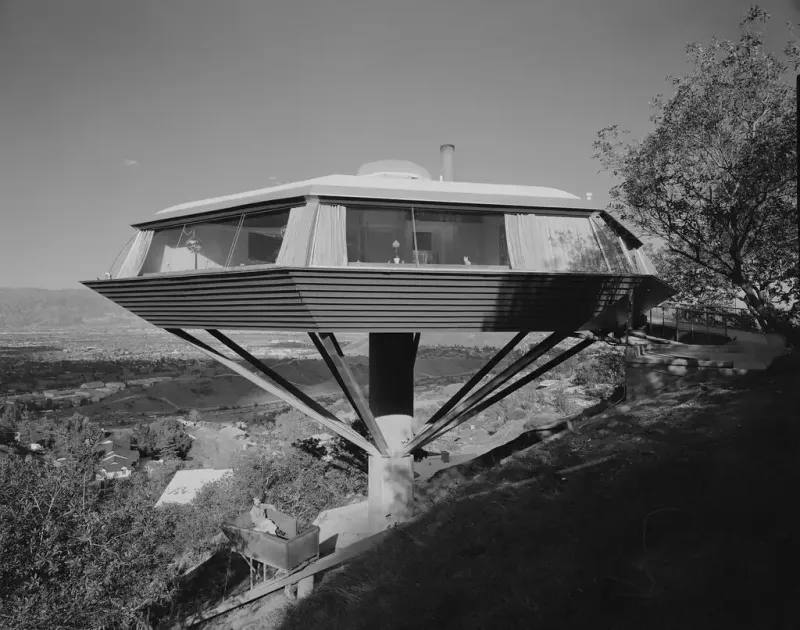
Beam me up, Scotty! The 1960s were a time of optimism and innovation, and this spirit was reflected in the architecture of the era. Space Age design embraced futuristic elements, with sleek lines and bold shapes that seemed to defy gravity.
Buildings became works of art, with architects daring to dream big and bold. Large windows, open spaces, and an emphasis on simplicity and function were key features of this architectural style. It was an era that saw the fusion of form and function in the most creative ways.
Space Age architecture captured the imagination, much like the moon landing did. It was a reflection of society’s aspirations and a belief that the future held endless possibilities. These structures stand as a testament to a time when humanity dared to reach for the stars.
11. Drive-In Movies
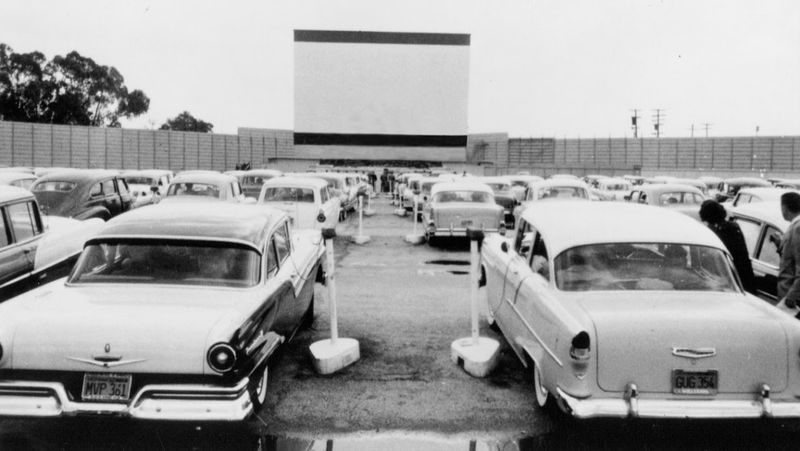
Rev up your engines and grab your popcorn—it’s time for a trip to the drive-in movies! The 1960s saw the golden age of drive-ins, where families and couples gathered under the stars for a night at the flicks.
With the car radio tuned to the movie’s frequency, the drive-in was more than just a place to watch films. It was a social hub where people could relax, laugh, and enjoy the magic of cinema in the great outdoors.
Classic cars lined up row by row, their occupants snuggled up with blankets or perched on hoods. It was a quintessentially American experience, combining the love of automobiles with the thrill of the silver screen. So buckle up and take a nostalgic ride through the era of drive-ins!
12. The Feminine Mystique
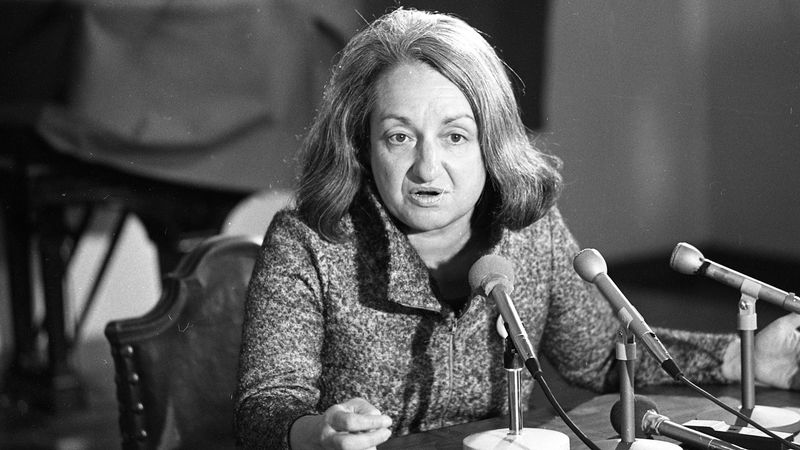
Sisters are doing it for themselves! The 1960s saw the feminist movement gain momentum, with Betty Friedan’s ‘The Feminine Mystique’ sparking a revolution of thought and action.
Women began questioning societal norms and roles, challenging the status quo that confined them to domestic spheres. They sought education, careers, and independence, demanding equality in a world that often saw them as secondary.
As the movement gained strength, it became clear that change was not just inevitable—it was necessary. Women rallied, organized, and made their voices heard, paving the way for future generations. The Feminine Mystique was more than just a book; it was a catalyst for empowerment and change. Hear us roar!
13. Motown’s Musical Revolution
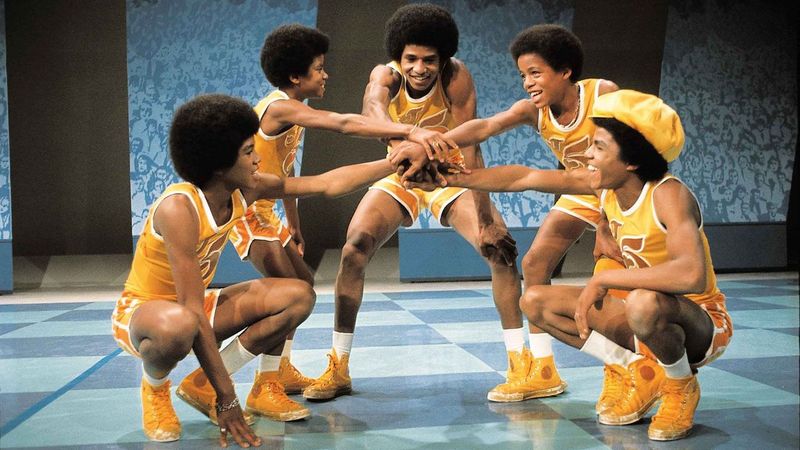
Stop! In the name of love—let’s talk about Motown! The 1960s were a time of musical revolution, and Motown was at the heart of it. This record label brought African American artists to the forefront, delivering hits that still make us move and groove.
With artists like Diana Ross, Marvin Gaye, and The Supremes, Motown’s sound was smooth, soulful, and utterly irresistible. The music transcended race and culture, uniting audiences with its catchy rhythms and heartfelt lyrics.
Motown wasn’t just about music; it was about breaking barriers and bringing people together. Its impact on the music industry was profound, laying the groundwork for future generations of artists. So put on your dancing shoes and let’s keep the Motown magic alive!
14. Prohibition Ends
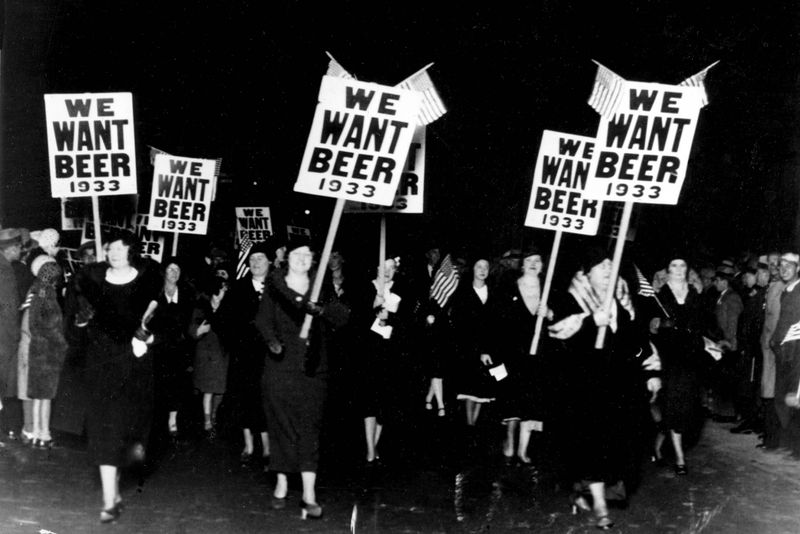
Raise your glasses and toast to freedom—Prohibition is over! While the official end was in 1933, the 1960s saw a resurgence of cocktail culture, as bars and lounges flourished once more.
The cocktail became a symbol of sophistication and style, with mixologists crafting concoctions that were as artistic as they were delicious. From martinis to Manhattans, the ’60s embraced the art of the drink, elevating it to new heights.
Social gatherings centered around the bar, where laughter and camaraderie flowed as freely as the spirits. It was a time to celebrate, indulge, and enjoy the finer things in life. So cheers to living it up in the swinging ’60s!
15. Space Race Fever
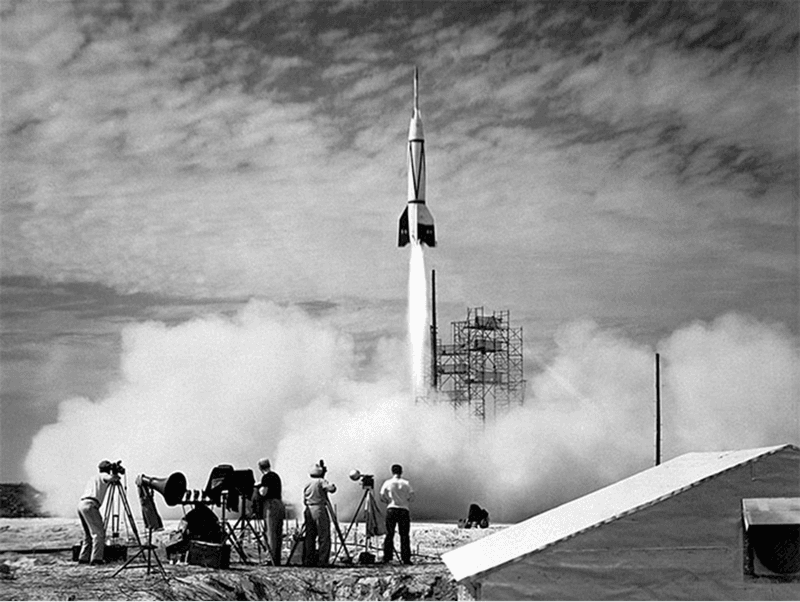
3… 2… 1… blast off! The Space Race captivated the world’s imagination in the 1960s, as the United States and the Soviet Union competed for dominance beyond our planet.
Schools held special broadcasts, and children watched wide-eyed as rockets soared into the sky. The race was not just about reaching the moon; it was a symbol of progress, technology, and the human spirit’s unyielding quest for exploration.
The excitement was infectious, inspiring a generation to dream big and aim high. As astronauts became national heroes, the Space Race underscored the possibilities that lay beyond our earthly bounds. Ready for liftoff?
16. Psychedelic Art Movement
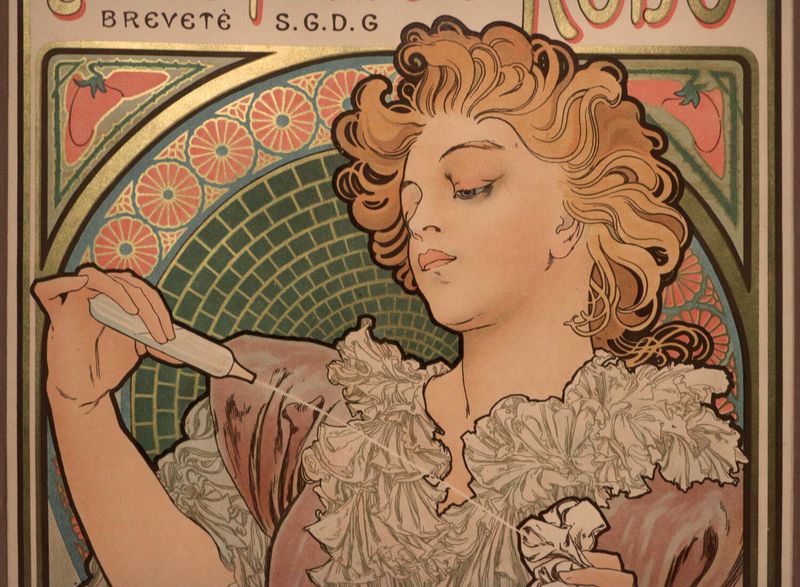
Step into a world of color and wonder with the psychedelic art movement of the 1960s. This era saw artists push the boundaries of creativity, with mind-bending visuals that reflected the spirit of the times.
Psychedelic art was all about exploration, both inner and outer. The swirling patterns and vivid colors were an expression of the counterculture movement, challenging perceptions and celebrating individuality.
From posters to album covers, this movement left an indelible mark on visual art. It was a time when art became an experience, not just a visual, inviting viewers to see the world through a different lens. Ready for a trip?
17. The Cold War
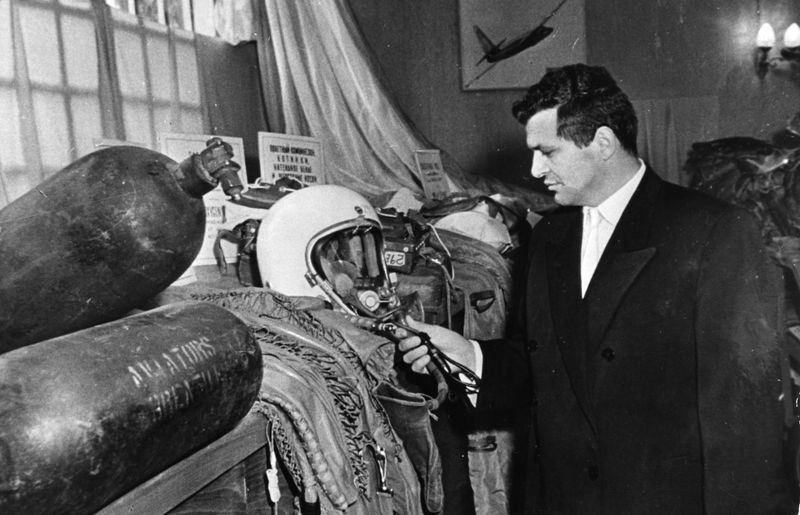
Freeze! It’s the Cold War—a time of espionage, intrigue, and international tension. The 1960s were marked by a standoff between the United States and the Soviet Union, with the world teetering on the brink of nuclear conflict.
Behind closed doors, diplomats and spies played a high-stakes game of chess, while the public watched with bated breath. The Cuban Missile Crisis was one of the most terrifying moments, reminding everyone just how close we came to disaster.
Yet, amid the tension, there were efforts to bridge the divide and promote peace. The Cold War was a complex period, but it also showed the resilience of diplomacy in the face of fear. Ice to meet you!
18. Counterculture Movement
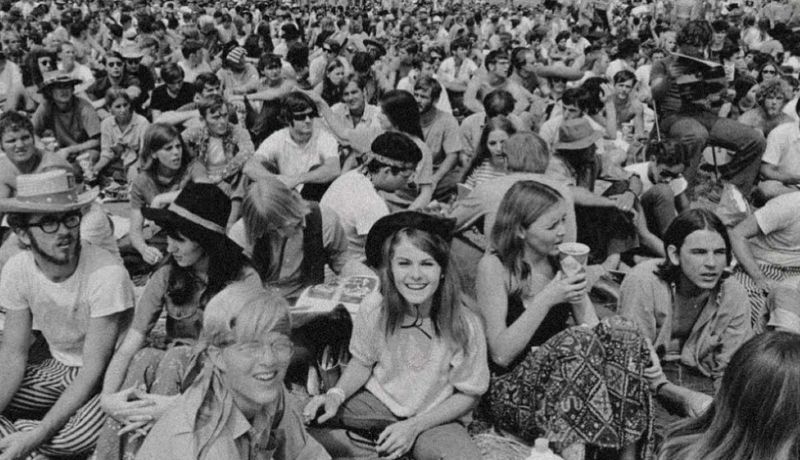
Revolution is in the air! The 1960s were a time of radical change and the counterculture movement was at its heart. Rejecting traditional norms, this movement embraced new ideas and ways of living.
From peace protests to communal living, those involved sought to create a society based on love, equality, and freedom. Music, art, and fashion became tools of expression, challenging the status quo and igniting a cultural revolution.
The counterculture movement reshaped society, leaving a legacy of change and progress. It was a reminder that challenging the norm is not just possible but necessary for growth. Keep on truckin’!
19. The Supremes on Ed Sullivan

Stop! In the name of The Supremes! When Diana Ross and her group took the stage on The Ed Sullivan Show, it was a moment of magic. The 1960s were a time when television brought music to the masses, and The Supremes were at the forefront.
With their glamorous dresses and soulful voices, they captivated audiences, breaking racial barriers and becoming icons of their time. Their performances were more than just music—they were a blend of style, grace, and undeniable talent.
The Supremes’ success on shows like Ed Sullivan’s was a testament to the power of television in shaping cultural narratives. Their legacy continues to inspire artists and fans alike, proving that music has the power to change the world. Sing it, sisters!
20. Nuclear Family Portraits
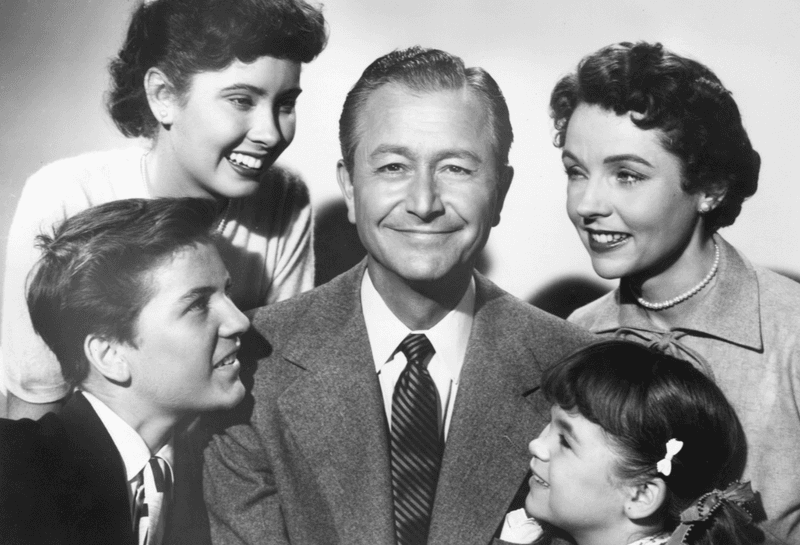
Say cheese! The 1960s were a time when the nuclear family was idealized, with portraits capturing the essence of this cherished social unit. These photographs were more than just images—they were snapshots of the American dream.
Families posed proudly in front of their suburban homes, perfectly coiffed and smiling. The nuclear family represented stability and success, a cornerstone of societal values during this era.
Yet, behind the smiles, societal norms were beginning to shift. The 1960s set the stage for changing family dynamics, as more women entered the workforce and traditional roles were questioned. Still, these portraits remain a nostalgic reminder of a bygone era. Picture perfect!
21. James Bond Mania
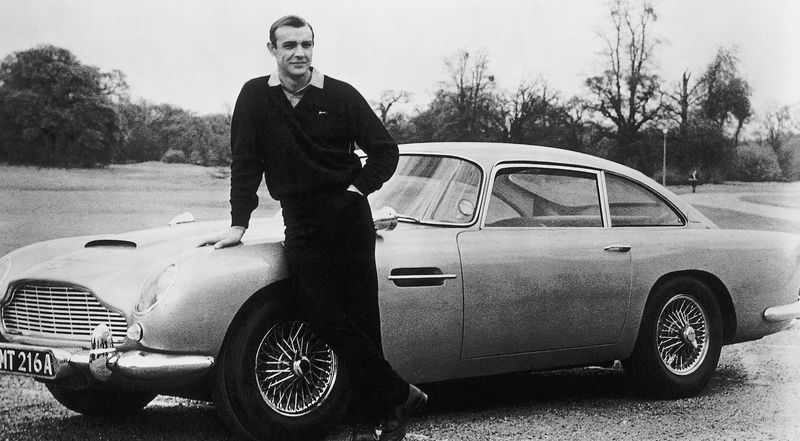
Shaken, not stirred! The 1960s introduced the world to the ultimate spy—James Bond. With his impeccable style, cool gadgets, and thrilling adventures, Bond became a cultural icon, capturing the imagination of audiences worldwide.
The Bond films of the ’60s set the standard for action and sophistication, with Sean Connery’s portrayal defining the character. Whether navigating exotic locales or outsmarting villains, Bond’s escapades were the epitome of cool.
Every mission was a blend of danger and charm, making Bond a hero to aspire to. His legacy endures, with his influence seen in countless films and characters that followed. License to thrill, anyone?
22. Andy Warhol’s Pop Art
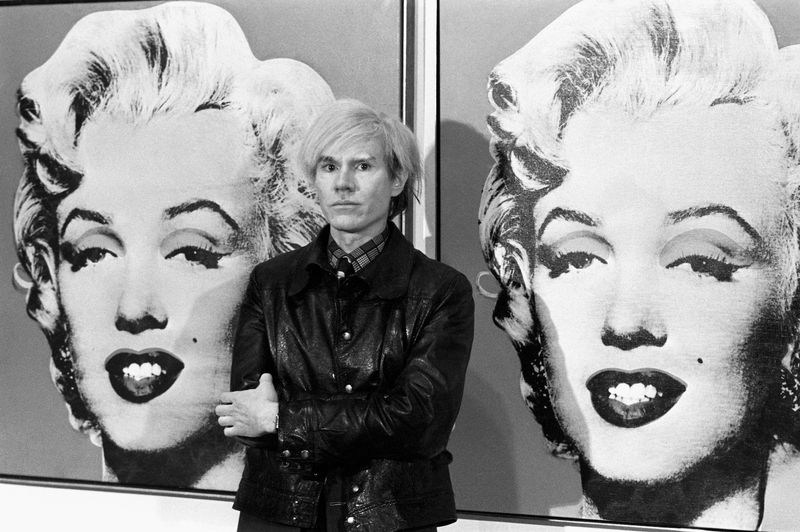
Pop goes the easel! The 1960s saw the rise of pop art, with Andy Warhol leading the charge. His work blurred the lines between high art and popular culture, challenging traditional perceptions of art.
Warhol’s vibrant prints of everyday objects and celebrities were more than just images—they were a commentary on consumerism and fame. The Campbell’s Soup Cans and Marilyn Monroe portraits became symbols of the pop art movement.
Warhol’s influence extended beyond art, shaping the cultural landscape of the ’60s. His work continues to inspire, reminding us that art can be found in the most unexpected places. Time for a pop quiz!
23. British Invasion
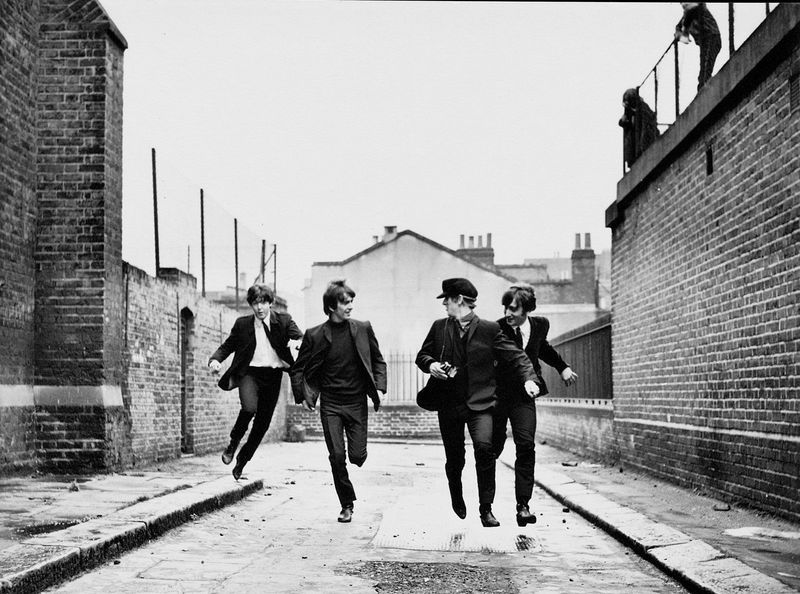
Turn up the volume—the British Invasion is here! The 1960s were a time when British bands like The Beatles and The Rolling Stones took America by storm, transforming the music scene.
Their music was fresh, their style iconic, and their impact profound. Audiences couldn’t get enough, and British bands became household names, their tunes a soundtrack to an unforgettable decade.
The British Invasion wasn’t just about music; it was a cultural exchange that influenced fashion, attitudes, and lifestyles. The legacy of this era continues to resonate, proving that music truly knows no borders. Rock on!
24. Barbie’s Debut
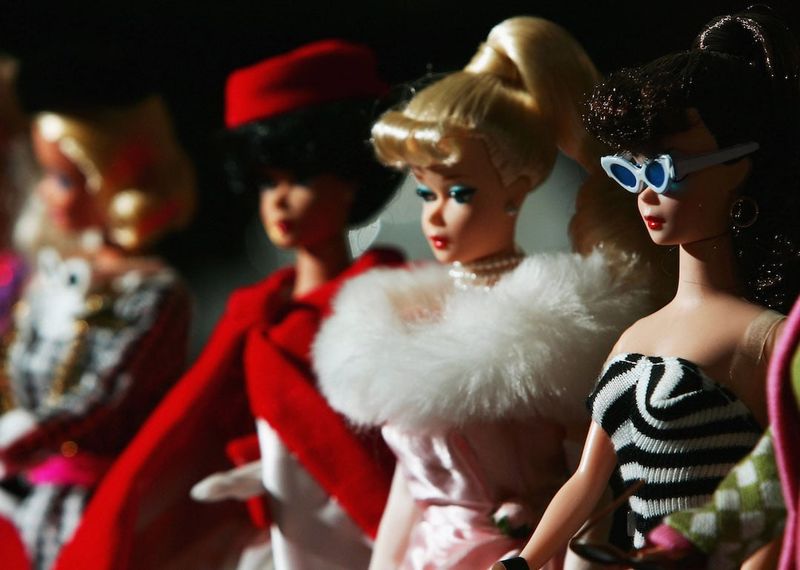
Come on, Barbie, let’s go party! The 1960s welcomed a new fashion icon—Barbie. With her stylish wardrobe and endless career possibilities, Barbie inspired a generation of young girls to dream big.
As Barbie hit the shelves, she quickly became a must-have toy, offering more than just playtime fun. She was a symbol of empowerment, encouraging girls to explore different roles and imagine their futures.
While Barbie has evolved over the decades, her debut in the ’60s marked the beginning of a cultural phenomenon. She wasn’t just a doll; she was a reflection of the changing times and a source of inspiration. Plastic fantastic!
25. Transistor Radios
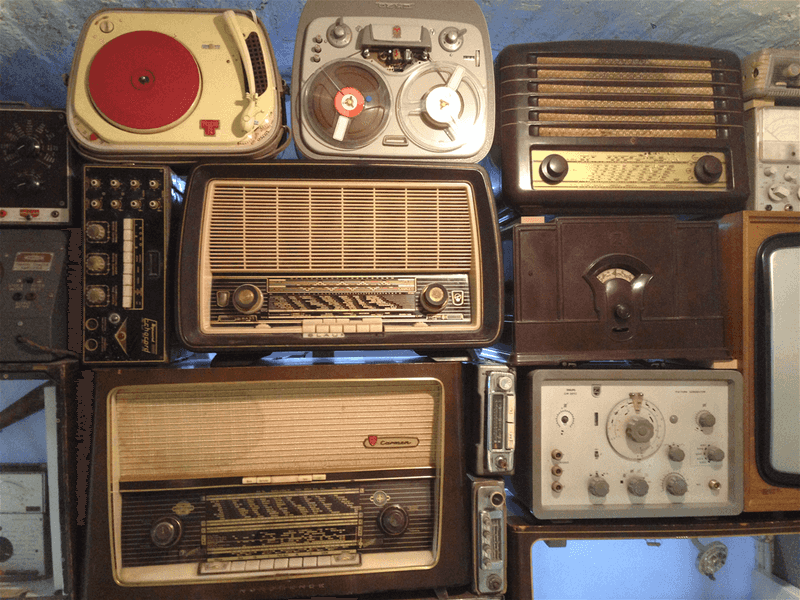
Tune in and turn up the volume! The 1960s saw the rise of the transistor radio, a portable device that revolutionized how people listened to music.
Teenagers carried these radios everywhere, filling the air with the latest hits and creating impromptu dance parties. The transistor radio symbolized freedom and independence, allowing young people to curate their own soundtracks.
As the music played, the radio became a companion, a source of entertainment and connection. It was a time when music truly became a part of daily life, thanks to this tiny technological marvel. Rock and roll forever!
26. John F. Kennedy’s Inauguration
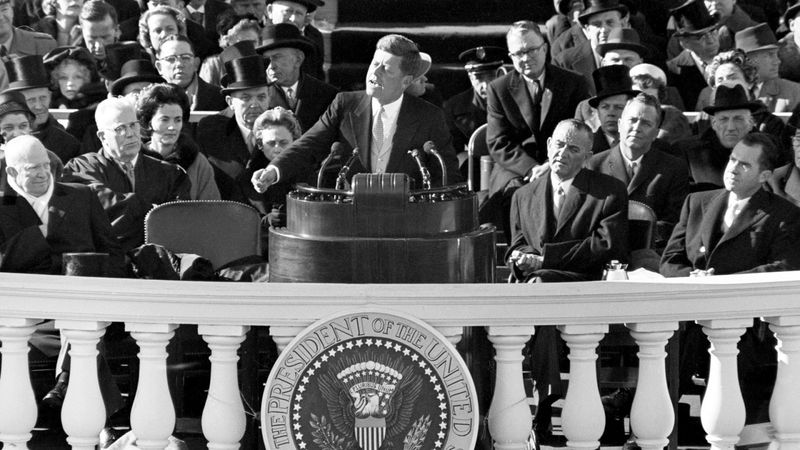
Ask not what your country can do for you—ask what you can do for your country! John F. Kennedy’s inauguration in 1961 was a moment of hope and inspiration for the nation
With his youthful energy and charismatic presence, Kennedy’s speech resonated with the promise of a new era. It was a call to action, urging Americans to work together for a better future.
The Kennedy presidency, though tragically cut short, left a lasting impact on the nation. His vision of progress and unity continues to inspire, serving as a reminder of the power of leadership. Camelot lives on!
27. The Jetsons
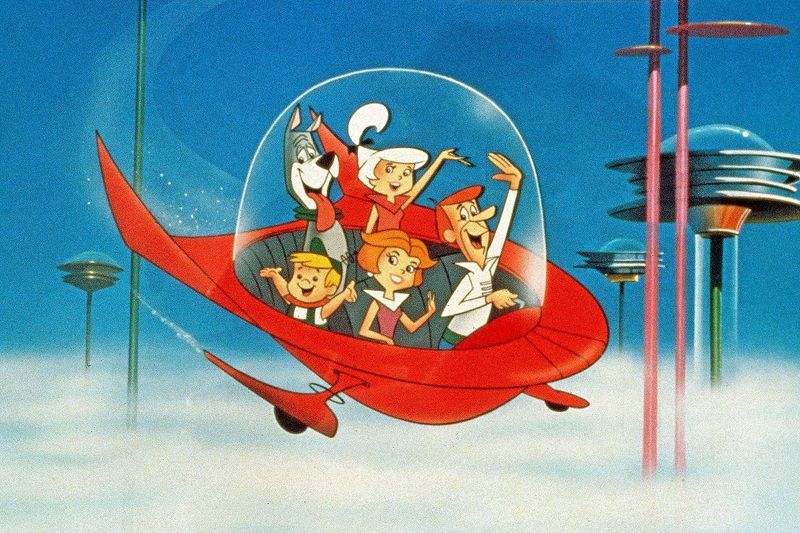
Meet George Jetson and his futuristic family! The Jetsons cartoon was a window into what many imagined the future would look like in the 1960s.
With flying cars, robotic maids, and video calls, the show painted a picture of a world full of technological marvels. It was a humorous take on modern life, blending science fiction with everyday family dynamics.
Though many of these futuristic predictions have yet to materialize, The Jetsons remains a beloved classic. It’s a reminder of the optimism and imagination of the ’60s, where anything seemed possible. Beam us up, Rosie!
